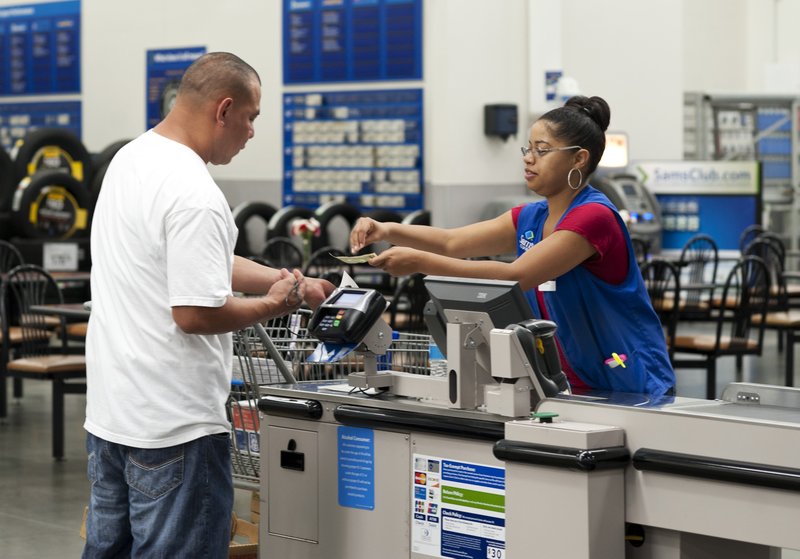WASHINGTON -- Retail sales were little changed in July, the worst performance in six months, as automobile demand slowed and tepid wage growth restrained U.S. consumers despite recent job gains.
The Commerce Department said Wednesday that seasonally adjusted retail sales were unchanged in July compared with the previous month. Total sales rose a statistically insignificant $161 million from $439.6 billion in June.
"There's no sign of momentum or enthusiasm out of the consumer right now," said Stephen Stanley, chief economist at Pierpont Securities in Stamford, Conn. "Income growth continues to be so-so. Employment has picked up in recent months but you're not seeing the growth in hours worked that would generate big increases in paychecks. I don't think people have the wherewithal, not to mention the inclination, to ramp it up."
The spending dips at auto dealers and department stores last month were offset by gains at grocery stores, gasoline stations, restaurants, clothiers and building-material stores.
The figures suggest that Americans are hesitant to spend, which could limit growth for the economy. Retail sales are closely watched because consumer spending accounts for 70 percent of economic activity.
Retail sales have flat-lined even though employers have added more than 200,000 jobs a month for the past six months. Payrolls increased by 209,000 in July and 298,000 in June.
But those gains have yet to push wage growth above inflation, causing spending to be more restrained.
Retail sales have increased 3.7 percent over the past 12 months, but economists doubt that spending can grow much faster unless incomes increase.
"Consumers just don't have the cash flow to finance sustained gains above 4 percent," said Ian Shepherdson, chief economist at Pantheon Macroeconomics.
The weak sales in July mean that consumer spending is off to a slow start in the third quarter.
Consumer spending did pick up in the April-June quarter after a sluggish showing in the first three months of the year. It grew at a 2.5 percent annual pace, after increasing just 1.2 percent in the first quarter, which was the weakest reading in nearly three years. In a healthy economy spending growth is typically 3 percent or higher.
Americans are sending mixed signals about their willingness to spend. Consumer confidence jumped to its highest level in nearly seven years in July, according to the Conference Board. That suggests Americans may be more willing to open their wallets.
And auto sales grew 9 percent in July from a year earlier to 1.4 million, the best showing for July since 2006.
But purchases of large items like autos may be leaving many Americans with less money to spend on discretionary items such as clothing and electronics. Rising grocery prices may have squeezed household budgets as well.
U.S. businesses added to their stockpiles at a slightly slower pace in June compared with May, the Commerce Department said Wednesday, possibly reflecting weaker sales in the past two months.
Business stockpiles increased 0.4 percent in June on a seasonally adjusted basis after a 0.5 percent gain in May. Sales rose 0.3 percent in June, matching the May increase. Sales have slowed after rapid gains from February through April.
The 0.4 percent rise in inventories in June was in line with economists' expectations. It reflected a 0.5 percent increase in inventories held by retailers and 0.3 percent gains in inventories held by manufacturers and by wholesalers.
Inventory growth is closely watched by economists. When companies add goods to store shelves and warehouses, it shows optimism about future demand. Increasing orders to restock lifts factory production and overall economic growth.
Information for this article was contributed by Josh Boak and Martin Crutsinger of The Associated Press and by Lorraine Woellert of Bloomberg News.
Business on 08/14/2014
